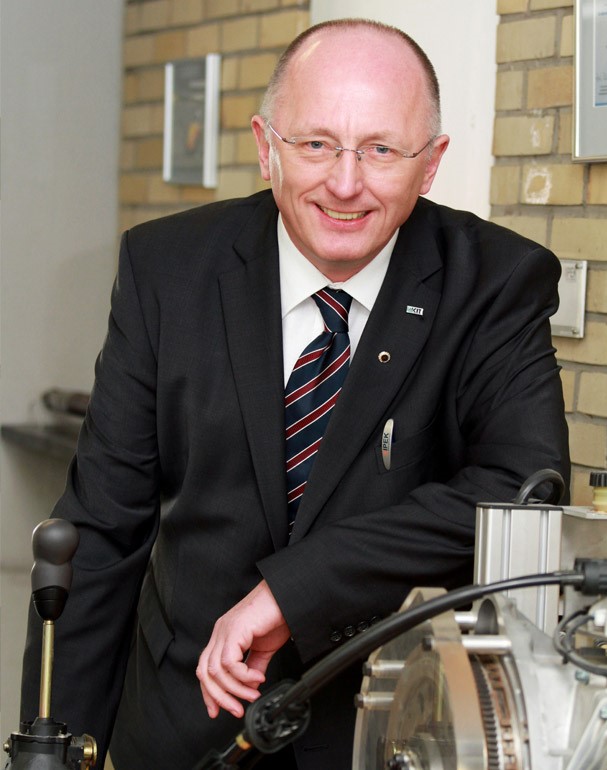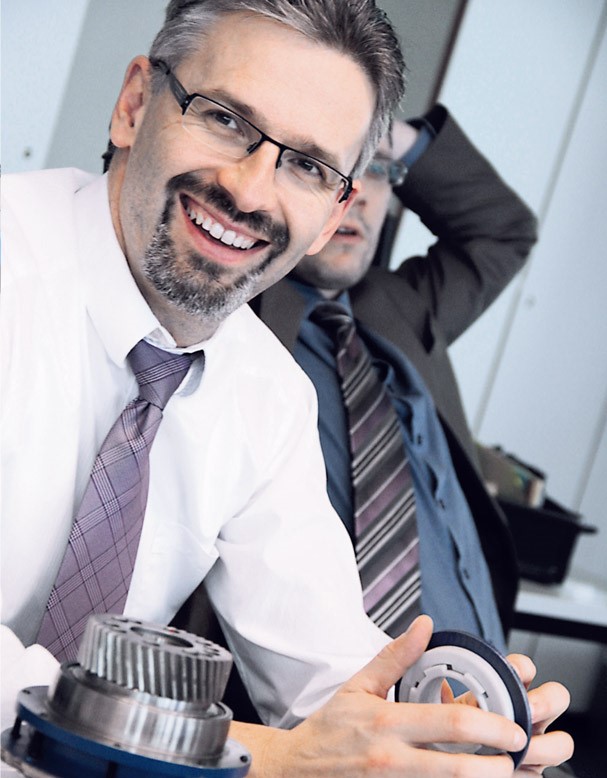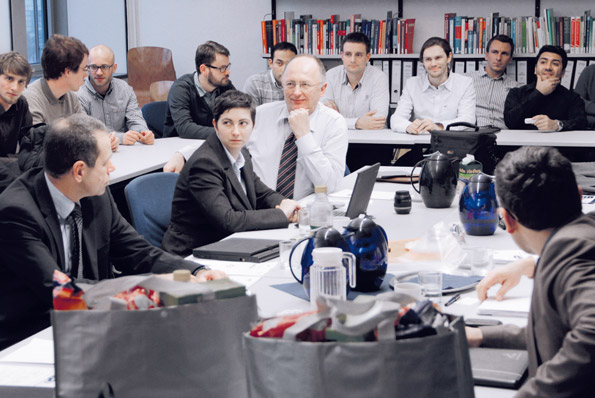How industrial companies, scientific institutes and students jointly develop product innovations.
Thomas, Diego and Daniel spend most of their time in a small room at the Institute of Product Engineering at KIT. The three students are working on a secret project. For four months, they research market gaps, find product ideas, test out what is feasible, and build a prototype in record time. The mechanical engineers in their final master's semester invest 50 to 60 hours a week in a product that should soon find its way onto the market. However, they will not be selling it themselves - they are working on behalf of an industrial group.
"Here we are doing the reality test for the methods we learned in our studies - under time pressure, using real problems in existing companies," says team spokesman Daniel. A suitable introduction to the imminent professional world as a product developer. It is also a rewarding cooperation - not only for the students, but also for the industrial company and KIT.
"As a research institution, we have the task of releasing excellently trained junior staff into industry. Highly qualified specialists create innovations in companies and form the basis for our economic strength."
Every winter semester, up to 42 students are selected in an application procedure for the seminar "Integrated Product Development" at IPEK - Institute of Product Engineering at KIT, where they work in development teams to tackle the task of an annually changing industrial partner. This is a mammoth project that goes far beyond conventional seminar contents and expands the boundaries of teaching. The aim is for the students to create innovations under the guidance of scientists and design engineers from the field - and to take this experience with them into their later professional lives.
Professor Albert Albers, head of the Institute of Product Engineering, teaches the methods and processes for product development in the accompanying lectures and workshops. Through intensive coaching, the student teams are guided to develop new product concepts, present them in milestone presentations to the project partner, and validate their solutions virtually and experimentally with the help of functional prototypes. "The industrial partner benefits from the wealth of ideas and the methodical approach of almost fully trained engineers, while the students work under realistic conditions and acquire important operational skills. We at KIT can test and revise the methods and tools we have developed for product development on the basis of the project progress - a win-win-win situation for all project participants," says Professor Albers, who took over and restructured the institute in 1996.
The students work on the project for a total of 16 man-years every winter semester and they generate hundreds of ideas and solution concepts during the creative phase. This also requires a great effort from the industrial partners' developers who sort and evaluate the ideas of the "young guns" in the milestone meetings at KIT and select them for further processing in the development team.
In the winter semester of 2012/2013, the global mechanical engineering company WITTENSTEIN became involved as an industrial partner in Integrated Product Development. The collaboration is a real success story: Within just one year, a student team's idea turned into a product that was presented at the EMO 2013 industrial trade fair and has since been marketed: a new form of rack-and-pinion assembly that can be used in production in many industries.
„Instead of the common practice of pre-fixing the racks with screw clamps and then screwing them tight, the new racks can now be mounted directly without pre-fixing thanks to a modified mounting concept with slotted holes and eccentric screws. Benefit-oriented developments in collaboration with customers have confirmed that up to 50 percent less time is needed to mount racks on the machine bed thanks to the modified fastening technology," explains Axel Leidner, Head of Product Management at WITTENSTEIN's largest subsidiary, WITTENSTEIN alpha GmbH.
Andreas Hörtling was part of a student team in the winter semester 2012/2013. For him and his teammates, the project months were the most instructive time in their entire studies: "We had to find our way around in an unfamiliar field and were thrown in at the deep end. Through structured methods, good coaching and a lot of passion, we achieved results that we had not thought possible at the beginning of the project." Apart from the technical qualification, Hörtling also valued the personal development in the team: "For the first time in a technical study, we had to intensively deal with the strengths of the different characters and use them effectively." Andreas Hörtling is currently finishing his studies with a master's degree and would like to become a developer, fueled by his experiences with Integrated Product Development.
For the scientists at IPEK, too, each cohort offers the opportunity to test their own thinking in a real-world context. Professor Albers and his colleagues focus on innovation processes in mechanical and vehicle engineering with the aim of exploring new development methods and processes under practical conditions. Feedback from the industry is particularly important for their validation. Before joining KIT, the institute director himself gained years of industrial experience and knows how important new impulses and expertise are for development departments: "Good ideas usually have to be worked out in a complex process so that they become real innovations on the market. This requires new generations of creative, well-trained engineers who think outside the box. Later, as graduates, they apply innovation-oriented ways of thinking and working in their companies - his is how we use our opportunities to play our part in maintaining and increasing the innovative strength of companies and our national economy."



